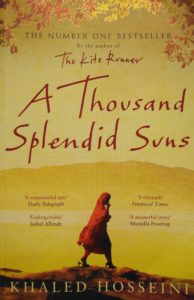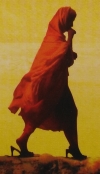
Why did I leave it so long to join the ‘Splendid Suns’ party?
I’ve always been a bit behind when it comes to the latest ‘in thing’. I refused for a long time to wear skinny jeans, I don’t ‘eat clean’ and I haven’t seen a single episode of Game of Thrones.
A Thousand Splendid Suns was first published a decade ago and became a bestseller, selling over one million copies in its first week of publication. It’s fitting, then, that I’ve only just read it. When I did finally pick it up, however, I finished it in just a couple of days, so I did my best to make up for lost time!
I didn’t necessarily intend to read the book so quickly; I simply couldn’t help myself. At every opportunity, I reached for my book and delved back into Hosseini’s world, desperate to discover what would happen to the characters in whom I’d become so emotionally invested.
In terms of narrative structure, A Thousand Splendid Suns begins by telling the story of young Mariam and follows her as she grows up. Suddenly, this protagonist is abandoned and the story focusses instead on Laila.
I generally prefer a book to pick a protagonist and stick with them and, initially, I found this structure jarring. However, it is in fact a masterful narrative decision. The reader retains their empathy for Mariam and, as the two women’s stories begin to merge, this empathy provides great depth to the story as a whole. The reader is given the rare opportunity to observe while fully informed and involved in more than one character.
The text is so well written. Hosseini creates a vivid, living world without the crutch of over-telling. He respects the reader and allows them to pick up on subtle details, making the book rewarding to read.
Similarly, Hosseini doesn’t indulge in superfluous description. The scenes of sex and death are written with the perfect level of detail; they are never gratuitous or titillating and the book is so much more sophisticated because of this.
The story is accelerated through time using references to people such as Osama Bin Laden and Bush, relating the text to recognisable people and moments. I found this to be an extremely effective device.
I have never been to Afghanistan. The only people I know who have been there did so in order to fight. The setting of A Thousand Splendid Suns could have been so unreachably foreign that the book didn’t work for me. However, Hosseini masterfully incorporates references to big, world events and infamous names into his text, anchoring the story firmly in the real world and thus making it accessible.
There is so much more I could write about this extraordinary book but I’d urge you instead to read it yourself. Then please let me know what you think because I’d love an excuse to talk more about Hosseini’s masterpiece!
The next book I read has got a tough act to follow…







Leave a Reply